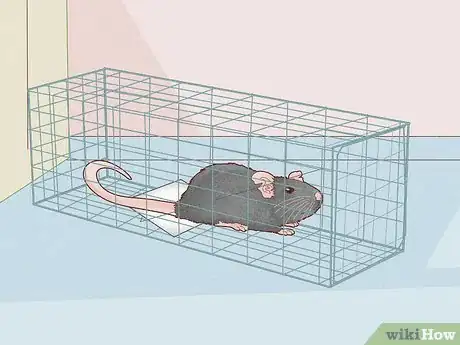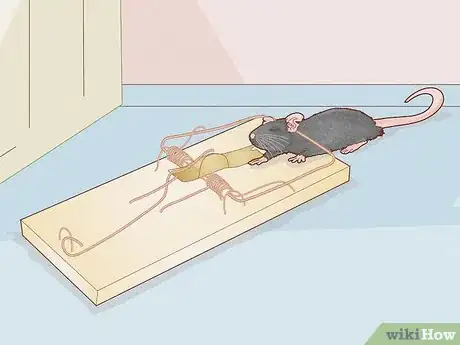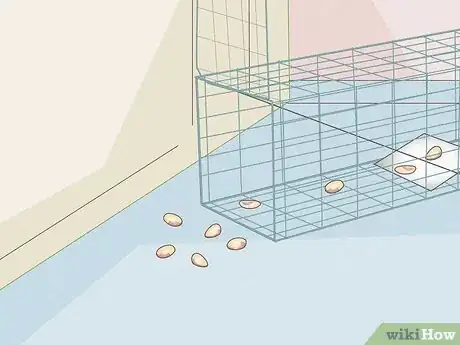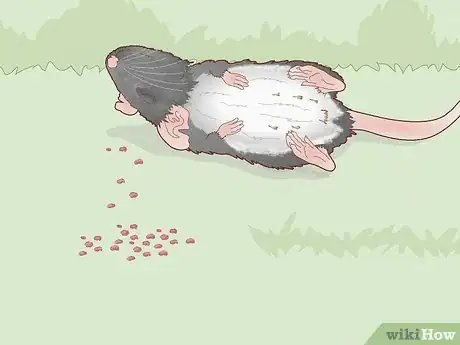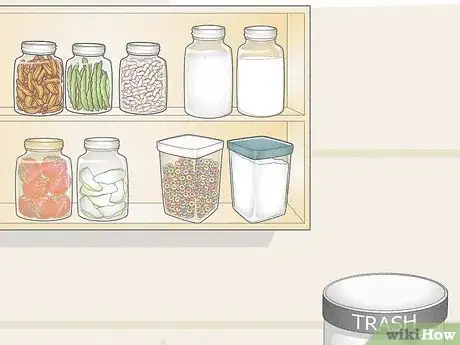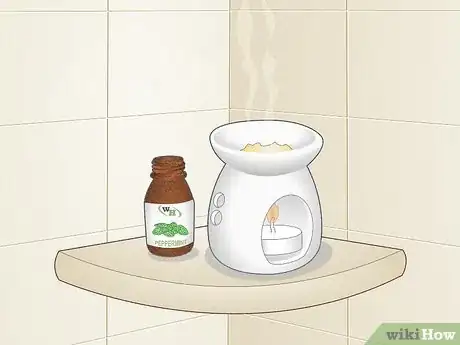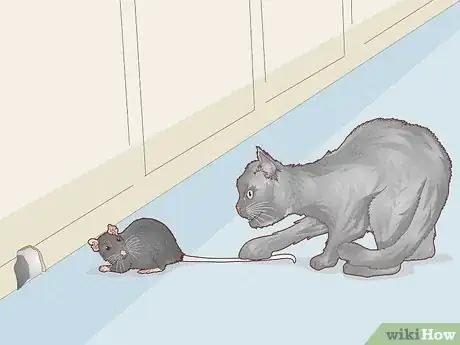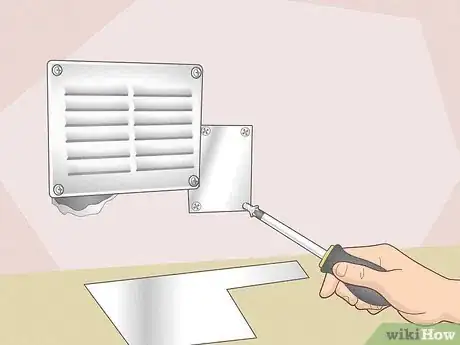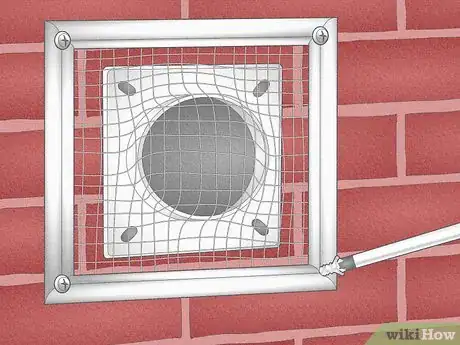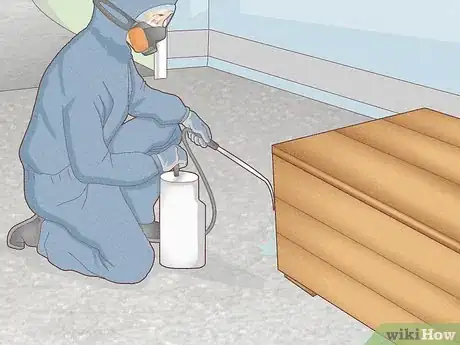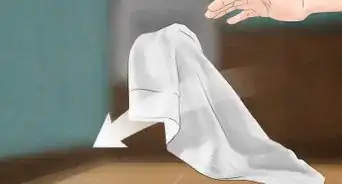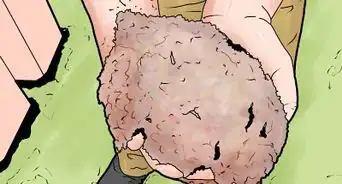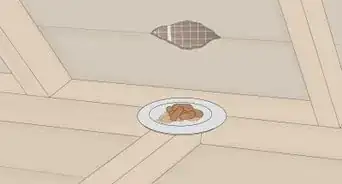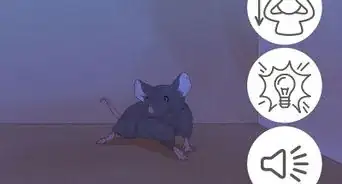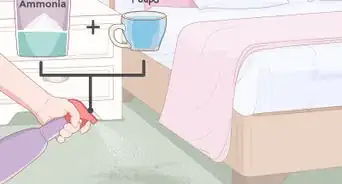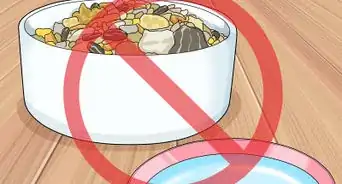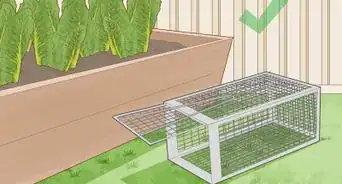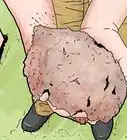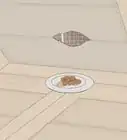This article was co-authored by Kevin Carrillo. Kevin Carrillo is a Pest Control Specialist and the Senior Project Manager for MMPC, a pest control service and certified Minority-owned Business Enterprise (MBE) based in the New York City area. MMPC is certified by the industry’s leading codes and practices, including the National Pest Management Association (NPMA), QualityPro, GreenPro, and The New York Pest Management Association (NYPMA). MMPC's work has been featured in CNN, NPR, and ABC News.
There are 19 references cited in this article, which can be found at the bottom of the page.
This article has been viewed 49,135 times.
Mice and rats are well known to never pay rent or restock the toilet paper, which makes them even worse roommates than most humans. If these furry monsters are wreaking havoc on your home, a two-part approach works best. Lay out enough traps (live or lethal) to reenact Home Alone; then work on making the building as inhospitable and inaccessible to rodents as possible.
Steps
Expert Q&A
Did you know you can get expert answers for this article?
Unlock expert answers by supporting wikiHow
-
QuestionDoes poison actually work to kill rats?
 Kevin CarrilloKevin Carrillo is a Pest Control Specialist and the Senior Project Manager for MMPC, a pest control service and certified Minority-owned Business Enterprise (MBE) based in the New York City area. MMPC is certified by the industry’s leading codes and practices, including the National Pest Management Association (NPMA), QualityPro, GreenPro, and The New York Pest Management Association (NYPMA). MMPC's work has been featured in CNN, NPR, and ABC News.
Kevin CarrilloKevin Carrillo is a Pest Control Specialist and the Senior Project Manager for MMPC, a pest control service and certified Minority-owned Business Enterprise (MBE) based in the New York City area. MMPC is certified by the industry’s leading codes and practices, including the National Pest Management Association (NPMA), QualityPro, GreenPro, and The New York Pest Management Association (NYPMA). MMPC's work has been featured in CNN, NPR, and ABC News.
MMPC, Pest Control Specialist It can, but it's not a particularly effective method for combatting rats. They have a very sensitive nose, and they can typically tell if something is poisonous before consuming it. It will also only ever work once. If a rat sees another rat eat something and it dies, it won't go back to that same food source.
It can, but it's not a particularly effective method for combatting rats. They have a very sensitive nose, and they can typically tell if something is poisonous before consuming it. It will also only ever work once. If a rat sees another rat eat something and it dies, it won't go back to that same food source. -
QuestionHow do I get rid of one mouse?
 Kevin CarrilloKevin Carrillo is a Pest Control Specialist and the Senior Project Manager for MMPC, a pest control service and certified Minority-owned Business Enterprise (MBE) based in the New York City area. MMPC is certified by the industry’s leading codes and practices, including the National Pest Management Association (NPMA), QualityPro, GreenPro, and The New York Pest Management Association (NYPMA). MMPC's work has been featured in CNN, NPR, and ABC News.
Kevin CarrilloKevin Carrillo is a Pest Control Specialist and the Senior Project Manager for MMPC, a pest control service and certified Minority-owned Business Enterprise (MBE) based in the New York City area. MMPC is certified by the industry’s leading codes and practices, including the National Pest Management Association (NPMA), QualityPro, GreenPro, and The New York Pest Management Association (NYPMA). MMPC's work has been featured in CNN, NPR, and ABC News.
MMPC, Pest Control Specialist I hate to break it to you, but there's rarely one mouse. Mice are social creatures and they typically live with families. It's very unlikely that you're just dealing with a single mouse. If you've seen a mouse multiple times and it looks identical, it's possible that they're multiple mice that just look very similar.
I hate to break it to you, but there's rarely one mouse. Mice are social creatures and they typically live with families. It's very unlikely that you're just dealing with a single mouse. If you've seen a mouse multiple times and it looks identical, it's possible that they're multiple mice that just look very similar. -
QuestionHow do you get rid of mice or rats in walls?
 Hussam Bin BreakHussam Bin Break is a Certified Commercial Pesticide Applicator and Operations Manager. He and his brother Hussam co-founded Diagno Pest Control in the greater Philadelphia area in 2018, and have since expanded their services to include the New Jersey market. Diagno Pest Control has received Home Advisor's Top Rated and Elite Service Badges for quality of work and customer service.
Hussam Bin BreakHussam Bin Break is a Certified Commercial Pesticide Applicator and Operations Manager. He and his brother Hussam co-founded Diagno Pest Control in the greater Philadelphia area in 2018, and have since expanded their services to include the New Jersey market. Diagno Pest Control has received Home Advisor's Top Rated and Elite Service Badges for quality of work and customer service.
Pest Control Professional Place a trap right outside of any holes and wait a few days before you repair it. You don't want to seal up the hole and trap the mouse inside of your walls because then they'll just look for another exit point. Place some food out to lure them toward the hole and then put a trap right underneath it. After a day or two, you should be good to patch up the gap.
Place a trap right outside of any holes and wait a few days before you repair it. You don't want to seal up the hole and trap the mouse inside of your walls because then they'll just look for another exit point. Place some food out to lure them toward the hole and then put a trap right underneath it. After a day or two, you should be good to patch up the gap.
Warnings
- Ensure safety by following a trap’s included directions.⧼thumbs_response⧽
- If you don’t check your humane traps at least twice a day, the trapped mouse or rat may die of dehydration or starvation before you can release it.⧼thumbs_response⧽
References
- ↑ https://agrilifeextension.tamu.edu/library/wildlife-nature-environment/managing-rats-and-mice/
- ↑ https://catalog.extension.oregonstate.edu/em9062/viewfile
- ↑ https://wwwnc.cdc.gov/eid/article/5/1/99-0125_article
- ↑ https://www.humanesociety.org/resources/what-do-about-wild-mice
- ↑ https://www.humanesociety.org/resources/what-do-about-wild-rats
- ↑ https://agrilifeextension.tamu.edu/library/wildlife-nature-environment/managing-rats-and-mice/
- ↑ https://entomology.ca.uky.edu/ef617
- ↑ https://extension.psu.edu/is-there-a-mouse-in-the-house-eliminate-mice-with-ipm
- ↑ https://catalog.extension.oregonstate.edu/em9062/viewfile
- ↑ Kevin Carrillo. Rodent Control Specialist. Expert Interview. 22 October 2019.
- ↑ https://edis.ifas.ufl.edu/dh044
- ↑ https://catalog.extension.oregonstate.edu/em9062/viewfile
- ↑ https://edis.ifas.ufl.edu/dh044
- ↑ https://extension.missouri.edu/publications/g9444
- ↑ https://extension.missouri.edu/publications/g9444
- ↑ Kevin Carrillo. Rodent Control Specialist. Expert Interview. 22 October 2019.
- ↑ https://www.hindawi.com/journals/tswj/2014/249284/
- ↑ https://www.cdc.gov/rodents/prevent_infestations/seal_up.html
- ↑ https://www.washingtonian.com/2018/09/02/the-rats-are-taking-over-dc/
- ↑ https://www.smithsonianmag.com/smart-news/cats-are-surprisingly-ineffective-keeping-urban-rat-populations-check-180970428/
- ↑ https://www.ncbi.nlm.nih.gov/pmc/articles/PMC5291527/
- ↑ https://faqcats.com/does-a-cat-really-keep-mice-away/
- ↑ Kevin Carrillo. Rodent Control Specialist. Expert Interview. 22 October 2019.
- ↑ https://extensionpublications.unl.edu/assets/html/g1530/build/g1530.htm
- ↑ https://extensionpublications.unl.edu/assets/html/g1530/build/g1530.htm
- ↑ https://edis.ifas.ufl.edu/dh044
- ↑ https://edis.ifas.ufl.edu/dh044
- ↑ https://extensionpublications.unl.edu/assets/html/g2017/build/g2017.htm
- ↑ Kevin Carrillo. Rodent Control Specialist. Expert Interview. 22 October 2019.
- ↑ http://www.goodhousekeeping.com/home/cleaning/a35872/how-to-get-rid-of-mice/
About This Article
To repel mice and rats, put 20-30 drops of peppermint oil in cotton balls and place them around your home since mice and rats hate the smell of peppermint. You can also lay dryer sheets or aluminum foil down around problem areas, such as counter tops and pantry shelves, since rats and mice don’t like the smell or taste of these items. Finally, if you want to prevent entry, block any passages from the inside to the outside of your house with caulk or steel wool. To learn how to trap and kill mice and rats, keep reading!
